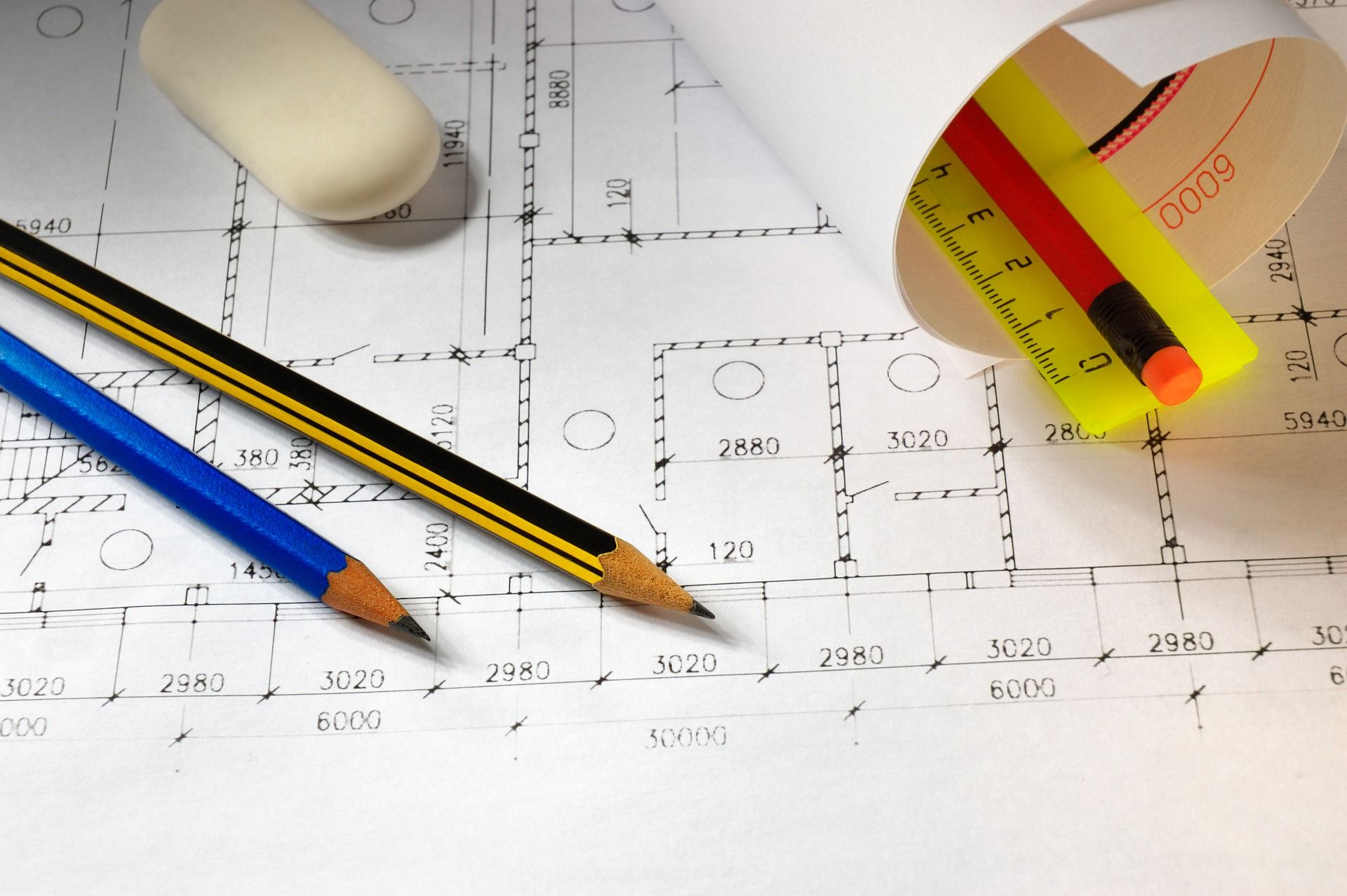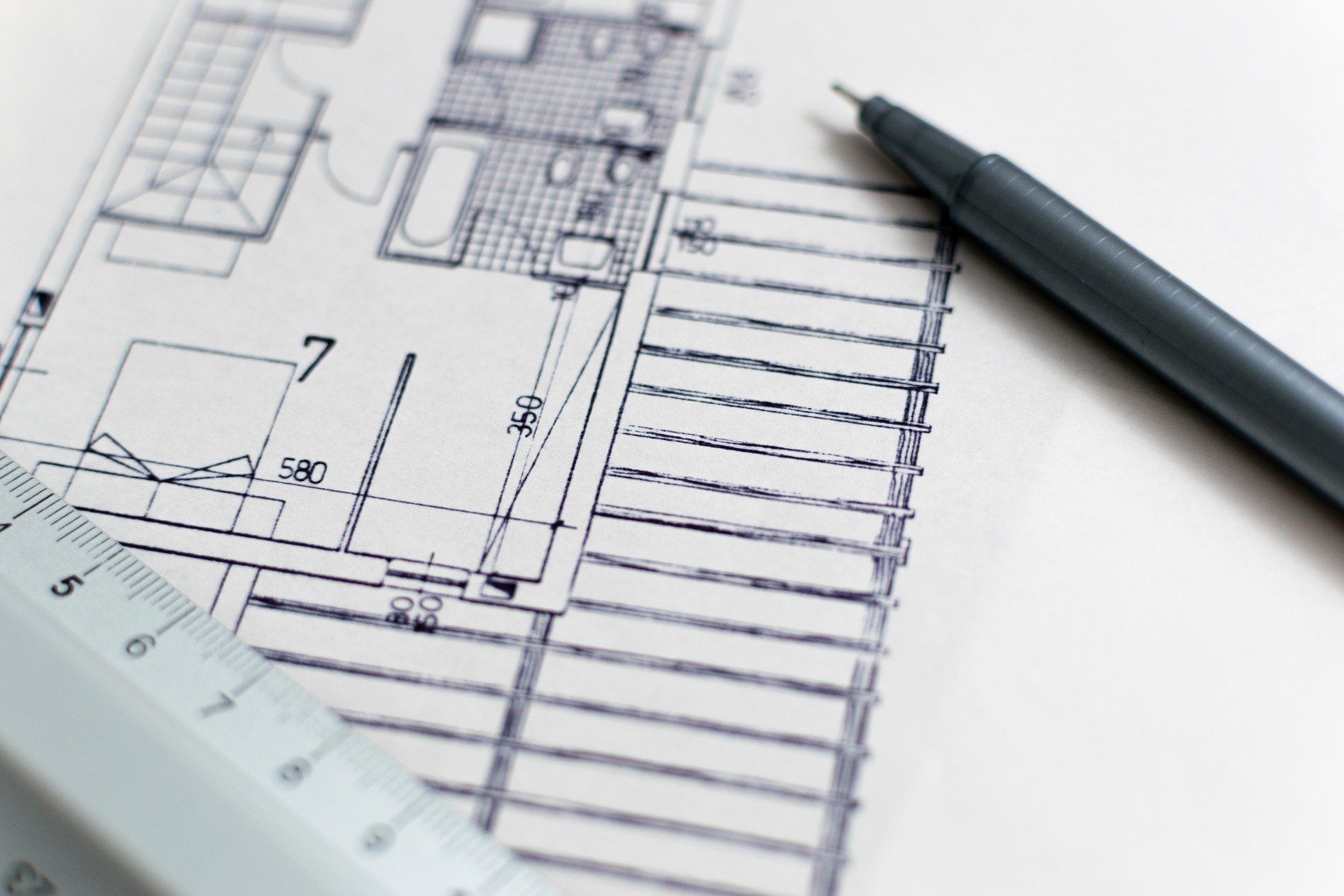When planning to build a new house or renovate an old one, you use drawings to express the design of the house. But what exactly goes into creating a drawing of a house? Can anyone do it at home with a ruler and a pencil? This article will guide you on how to make a drawing of a house from scratch, at home, with no technical knowledge required.
It goes without saying that any meaningful project cannot be undertaken without elaborate plans and a clear vision of the expected outcome. One of the main reasons for having a road map is the fact that resources are scarce, and if the project is to remain within its budget, a plan must be followed. When it comes to construction, this road map is set by architectural drawings of a house, which includes plans, maps, and design concepts.
A drawing of a house is a blueprint upon which the future building will be built. In general, architectural drawings are used to visualize the finished house. They also help to estimate the costs, determine the time frame and plan the construction project. More importantly, a drawing of a house guides the homeowner in designing their house the way they want it. Drawings and plans can be taken home and discussed with other occupants of the house to fine-tune every detail of the house, even before any work begins. One way of getting good housing plan designs for your house is to contact an architectural consultancy services company, which will listen to your requirements and come up with several designs you can tweak to get your perfect house. There is more on the design of residential apartments here.
Creating a drawing of a house takes careful thought, and brainstorming sessions to bring out as many details about the requirements as possible. Sketches are drawn and improved and the resulting drawings of the house will form the basic ideas for the design, and help in estimating the cost of construction.
Benefits of A Drawing of A House
Having a drawing of a house created for your future home has many benefits. For starters, it ensures your new house will serve your current and future needs. It also ensures that the design will align with your lifestyle and personal preferences. Here are just a few of the many other great reasons why you should get yourself a drawing of a house to plan your new home:
-
Lifestyle and personal appeal – Your house must live up to your lifestyle and personal appeal. It will be your home for a long time, and ensuring it represents who you are will guarantee that you will have a good living in the house. A drawing of a house in 3D design, for example, gives you a realistic rendering of a house in 3D, ensuring you are able to tweak even the tiniest details of the house to your taste.
-
Functional requirements – One of the most important design goals in architecture is functionality; to ensure that a building meets the needs of the occupants effectively. Putting the design of a house on paper helps to identify and allocate enough space to every functional element.
-
Aesthetics design – Beauty is something we all desire, and more so when it comes to our homes. A drawing of a house is made to visualize the exterior and interior finishing of a house, allowing one to play around with the designs on paper until the house takes the desired shape. 3D house designs are perfect for visualizing a house in 3 dimensions and full colour and should be used to design the aesthetics of a house.
-
Perspective design – A drawing of a house in two dimensions only shows one side of the house. However, perspective drawings show the house in three dimensions, from a point-of-view of an observer. This realistic drawing helps in designing the appearance of the house from multiple angles and shows the relationship between the sides.
-
Cost estimation – A technical drawing of a house will contain enough specifications to help estimate the cost of building the house. The materials and labour needed can be calculated and the cost of the entire project estimated accurately. A cost of construction calculator can aid this process.
-
Estimation of project timeline – A clear architectural design facilitates estimation of the time required for each unit of work, and the entire time frame required to finish development can be drawn up in advance, helping you plan better.
-
Materials and colour choices – Having a drawing of a house can assist with making the right choices on material and colour. A 3D drawing of a house generated by a computer allows you to look at a life-like model of the entire house, giving you the right perspective to decide on the materials and paint colours to use. To get a 3D house design for your building, contact an architectural consultancy services company and share your ideas with them. They generate 3D models of houses, complete with furniture, fixtures, and finishing décor. An advantage is that you will design your home surrounded by expert help.
-
Building regulations – Official design drawings of a house will factor in the building regulations that impact the house. For example, most municipal authorities will set the maximum area of a lot that can be occupied by the construction, referred to as the floor area ratio(FAR).
-
Environmental design – When you already know where the house will be built, having a drawing of the house will enable you to decide for example where the windows should face. Wind and sunlight directions, or the presence of natural phenomena, will affect how you decide to orient the house.
-
Context and landscaping design – A house will most likely be built near other buildings and within a certain community/society. Putting the design of a house on paper helps you to align it with the nearby structures while ensuring that the environment and the community are not negatively impacted by the house.
Types of drawings of a house
During the design of a house, different drawings of the house will be made, depicting various aspects of the design. In order to ensure that a suitable building is built for the occupants, architects make as many drawings of the house showing as many views as necessary. However, here are 9 of the most common drawing of a house:
-
Floor plans – a floor plan is a drawing of a house that shows a view of the house walls from above and depicts the arrangement of spaces and rooms in the house. It shows a horizontal cross-section of the building. There are several types of floor plans, with single floor plans being the most popular. Open floor plans are being used widely in modern architecture, where walls between living areas are removed to create large open communal spaces in the house. This has been widely adopted in the design of serviced apartments and urban residences.
-
Elevation drawings – an elevation is a drawing of a house that shows one facade of the house, as seen from one side. A house can have as many elevation drawings as it has sides, but these are the most common ones: normal front elevation, side, rear, and top elevations.
-
Cross-section – a cross-section drawing of a house shows a vertical plane of the house, illustrating the relationships between different levels of the house. It is the view you would get if you were to cut through the house with a giant saw.
-
Electrical wiring & plumbing drawing – this is a drawing for all electrical circuits and water conduits in the house. The diagram will not only indicate how each section of the house is powered and watered but also helps in estimating the cost of the needed installation.
-
Location plan – this drawing of a house shows the proposed development within its context and is often used by local planning authorities when assessing and licensing the development. Location plans depend on the current ordinance survey and are drawn using the standard metric scale. They should always indicate the North cardinal direction to depict the orientation of the drawing.
-
Perspective (Isometric and axonometric) drawings – a perspective drawing of a house shows the house in three dimensions, from a point of view of an observer. It keeps objects to scale and shows several sides of the building, and their relationship to one another. Perspective drawings may be categorized by the number of vanishing points used, which could be a one-point, two-point, or a 3-point perspective.
-
Detail drawing – This is a drawing of a house that zooms in on a small part of the house, and is drawn to a larger scale(usually 1/10, 1/5, or full size) to show how components fit together. Multiple detail drawings are needed to show how multiple parts relate to one another.
-
Design drawings – Design is a work of creativity and imagination. The various styles chosen for building the house are usually depicted with design concept drawings that suggest several ideas that can be used on the house. Modern architecture concepts such as urban farming and permaculture should be included in the design where possible.
-
Site plans – it is a drawing that shows the existing and proposed conditions of a particular site/lot where construction will take place. Prepared during the pre-design phase, a site plan shows property lines, access routes to the site, and any nearby structures that are relevant to the design. It is used to represent a design proposal or plan for the property.
How to create the floor plan drawing of a house
A drawing of a house begins with an idea in your mind about the kind of house you want. It is a technical diagram that conveys information about the technical specifications of the building. The drawing of a house is therefore guided by established frameworks and conventions in the world of architecture. These guidelines and standards help to ensure that the drawings can be understood by builders in every part of the world. However, it should all begin with you can taking a pencil and a sheet (or several) of paper, and making rough sketches as your turn around the house in your mind. After you have a clear mental image of the house, you can sit down with an architectural design services company and have them make the technical drawings of the house.
A sketch is a freehand drawing made quickly, just to develop an idea, and there is no need to be accurate. However, a floor plan involves many straight lines, and a little care to produce a neat drawing will not hurt. To make a neat floor plan drawing of a house, you will need some supplies handy before you start. These are:
-
Engineering scale – This is a special ruler that helps to easily transfer from one scale to another. For example, from inches to feet. This will help with drawing straight lines and recording lengths quickly
-
Engineering Paper – This is a paper with grids containing 5 squares per box, which is very convenient for drawing.
-
Pencil and an eraser – a sharp pencil will render clear illustrations and the eraser may come in handy when you need to change something
Remember that you are just drawing a sketch of the house, and there is absolutely no need to be accurate. Once you have the necessary supplies ready, here are simple steps to follow when sketching a floor plan drawing of a house:
-
Preparation – this refers to ensuring you have all the necessary information about the house you want. Make a list of all the rooms and utilities you want in the house, along with all their measurements. It also helps to know how big the proposed construction site is, because of building regulations such as the floor area ratio, which will determine the available construction space.
-
Planning – before you start sketching, think about how you want the rooms to be arranged, where you want the front elevation face, etc. The direction of wind and sunlight, as well as surface water drainage patterns, need to be considered as they will affect the orientation of the house. This basic idea of how to plan the house will guide the floor plan.
-
Draw the exterior walls – with all preparation done, first draw the exterior walls of the house on paper, using an appropriate scale. 1/4”: 1 foot is a good one to start with. The shape you want for the house will be outlined in this step.
-
Draw reference lines – once the initial shape of the house is illustrated, draw reference lines through the midpoints of all vertical and horizontal walls, to help you with scaling.
-
Draw the interior walls – at this point, draw the number of rooms and fixtures such as closets determined in step one. Careful thought is required when arranging the rooms and calculating the carpet area, to maximize space utilization.
-
Place the doors – It’s time to locate the positions of doors. Smooth movement in and out of living areas, as well as accessibility, must be kept in mind to ensure functional needs are met. Standard dimensions of doors are 2 foot 8 inches wide and are taken from the centre of the door.
-
Locate the windows – The next step is to add windows to the floor plan. Window dimensions are also taken from the centre. Use the lighting and wind considerations identified in step 1 to determine the sizes and location of windows for each elevation of the house.
-
Add furniture, appliances, and fixtures – at this point, the plan is ready to incorporate the design and placement of furniture and fixtures, especially in the kitchen and bathrooms. Draw out all closets and fixed cabinets, bathtubs, etc. Kitchen cabinets are usually 2 feet deep for the lower ones, and 1 foot deep for the upper cabinets.
-
Indicate dimensions – most of the drawing is done at this point and the next thing is to write out all dimensions on the plan. Indicate the dimensions of all walls, stairs, windows, doors, and fixtures on the drawing.
-
Label rooms and features – After all dimensions have been indicated, label all the rooms in the floor plan, as well as any other feature in the design. Any notes specific to an element in the drawing should also be added. Bedrooms are labelled with numbers, with the master bedroom being labelled as the first.
-
Clean up the drawing – The now complete drawing of a house floor plan will be quite untidy, and it is time to make your drawing look cleaner. Erase any mistakes and complete any lines that you may have erased accidentally. Work on it until you feel that your drawing is neat and looking clear-cut.
Image by Lorenzo Cafaro from Pixabay
Your drawing of a house is complete. What next?
If you have completed the simple steps above, and now have the drawing of your house, congratulations! It may feel like a rather tedious exercise to produce a nice drawing of a house, but it is well worth the effort. This exercise helps you figure out all the functional and other requirements for your house. You will feel a strong sense of ownership and pride, having personally designed your house from scratch.
Armed with this brilliant drawing of a house that you just made, it’s time to speak to an architectural designer who will convert your floor plan into a technical drawing, with all the bells and whistles of architecture and engineering. A good architectural consultancy services company will also generate 3D design models of your house to help you visualize the house as it would look upon completion. Needless to say, sitting down with an expert will improve your house plan. Due to years of experience, they can suggest improvements to meet needs you never knew you had!
Learn about our interesting articles on architecture related topics by clicking here.






